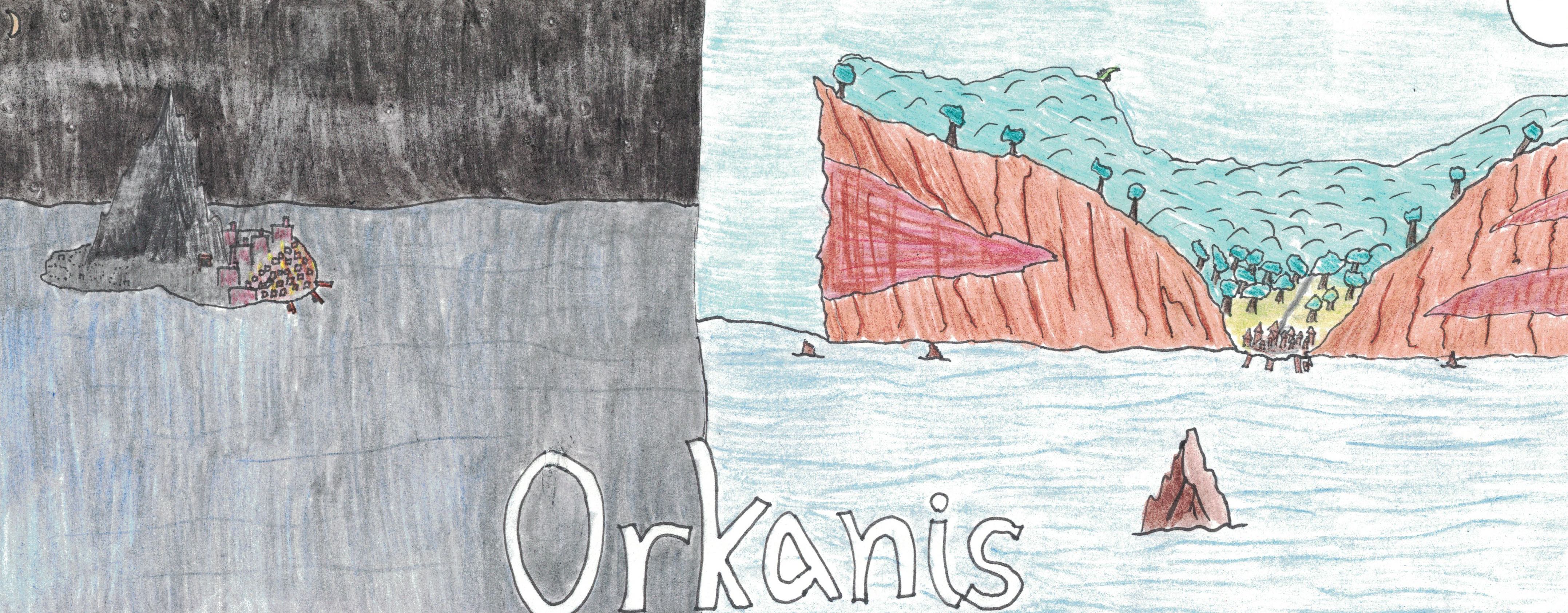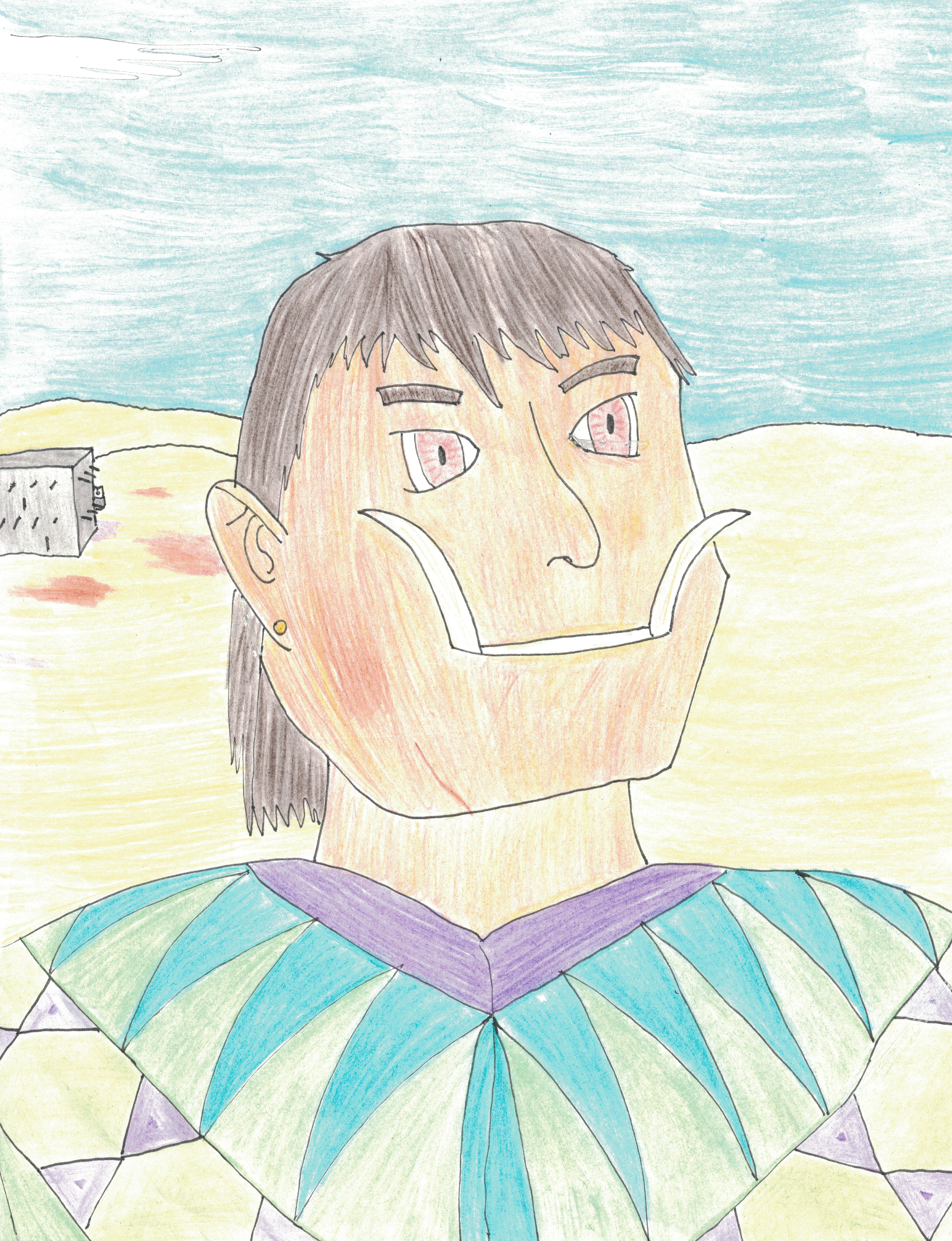Urukani
Redbridge strikes you as an interesting city. You’ve gotten a bed at a local boarding house, and you’re now ready to go see the townspeople. But you aren’t quite ready for the sheer variety of people that await you when you cross the city’s iconic red-orange bridge.
Over on the other side of the river, the quality of buildings changes considerably. Instead of the well-kept brick houses and stores of the eastern half of the city, you find more rough stone and wood. Thatch is the roofing material of choice, and except for a couple of stores nothing is over a story in height. It’s a stark contrast that prepares you for the people here too.
It’s a variety of races. You recognize a couple of otraylar of various kinds among the denizens of this city, as well as a couple of stranger folk (including one firbolg, if your memory on what hey look like is correct). But the urukani and their relations, the zerrani were your goal in this city, and you find them rapidly.
The tusks are the first thing you notice. Pushing up from under their lips, the zerrani have small points while the full-bloodied urukani have ones a handspan long. Their skin is a golden-brown, and they saunter around with determination. It's vaguely unnerving for you, but you've seen worse try to eat you while crossing the Ghostgrass Prairie. You can handle being a little conscious of your appearance in public.
You see them joking around, sharing a laugh as they look at your draconic appearance. You see children with the golden skin but no tusks running around in the street, hitting one another with wooden broom handles like they're swords. You see a couple of more prominent members of the community wearing brightly covered furs and leathers with geometric patterns on them (you resolve to go find out where they make those furs later). You find a whole culture here of a proud people, and you feel a little bit proud of them too.
Appearance and Traits
The most obvious difference between the urukani and the other races of Orkanis is their tusks. Bright white tooth-like protrusions, they often get to be quite long (around 25cm). The other trait that is immediately apparent is their golden skin, a little closer to a brass colour unlike the shining gold of the zëganilar. Due to their ancestral home in the caves and deserts of Akbir, they have the ability to see in the dark as though it were broad daylight, and their yellow-orange eyes often glow in that light as well. They are also very physically intimidating, to the point where some wonder if it is a supernatural effect. Finally, they have a very strong body, which makes them much more difficult to kill.Civilization and Culture
Major Organizations
The cults of the major urukan deities are still around, but they are considered illegal by the nations of Sedesta. The most powerful and well-known of these is the Cult of Galkhkora, who worships the urukan goddess of war and destruction.
The urukani are also very strongly represented in the military organizations of the world. Their natural toughness and intimidating presence makes them very desirable as soldiers.
Beauty Ideals
A male urukani is considered handsome if he has well-kept tusks. Being not unlike other teeth except for their size, they are very prone to yellowing and require regular brushing. A handsome urukani has to also be clean, most notably.
Female urukani are often judged for their hair. The urukani culture has a long history of dyeing and colouring hair, so a female urukani with dyed hair is often considered incredibly attractive.
Irregardless of gender, bright clothing and well-kept hair is incredibly desirable. Soldiers or warriors are also praised if they show off their scars or have tattoos relating to creatures or enemies they have killed in battle.
Common Etiquette Rules
When entering a home, it is custom for the host to offer tea or some other warm beverage. If one declines, it is considered polite regardless, but it is nonetheless important.
Common Dress Code
Bright colours, as previously mentioned, are the norm. The tradition of applying dye to materials like froza leather has created an expectation of vibrant colour amongst the urukani.
History
Before the Arrival, the urukani lived on the world called Akbir. They were in constant conflict with the darukhasi at this time, and the two fought hard over the few oases in the deserts of that world. Eventually, one of the darukhasi mages created a spell that would eradicate their race, but instead brought both the darukhasi and the urukani to Orkanis.
Arriving there, they were met with hostility. Their harsh existence in the desert made them more interested in fighting than trade or knowledge, so they often attacked neighbouring towns and cities. Because of this, the races of Sedesta, especially the ibelilar, quickly tried to "civilize" them, often by separating them from their original culture. Urukani (and in particular zerrani) children were taken from their families and enrolled in orphanages. This time is known among the urukani as the Ripping, and they have naturally very strong feelings about it.
Because of that act, there is a gap between the military and developed culture of the urukani and their modern, regionally-based culture. Recently rediscovered notes about them and vocal scholars among the urukani have begun to return their culture to them, causing a renaissance of what it means to be an orc on Orkanis.
Historical Figures
Rozura da Gara is a famous medicinal healer who wrote a treatise on maladies (known as Dis-eases and their Cures) that forms the basis for modern hospital and healer knowledge.
Many orcish families still praise their ancient ancestors and their accomplishments. It is considered a way to keep their memory alive despite the tragedy of the Ripping and the Arrival.
Interspecies Relations and Assumptions
The urukani and the zerrani are still heavily discriminated against in current Sedestan society. The major races of the world still associate them with their "barbaric" history and the worship of their bloodthirsty deities, which most urukani have shed those in favour of their local human culture and the worship of the Free Ones. However, the stereotypes of the "brutish orc" continue, and that is how most people regard them still.
Genetic Descendants
Lifespan
65-75 years.
Average Height
1.6-2.0 metres in height.
Average Weight
80-125 kg.
Related Materials
Naming Traditions
Male Names: Airo, Aishi, Dhor, Dirg, Dogar, Galkh, Kasir, Khiro, Khar, Ikrato, Nizo, Roziz, Shar, Wokh, Zakri. Female Names: Akara, Aisa, Doroa, Doshira, Falka, Frizha, Gasa, Ghna, Groma, Kora, Mima, Razha, Safar, Shiza, Zora.Major Languages
The urukani have great pride in their language, Urukan, and they will speak it almost exclusively. However, they often learn the local language of their region to interact with the other races living there.Geographic Distribution
The Arrival placed their race all over Orkanis, but they were also heavily persecuted for a very long time. This means that many urukan villages were destroyed or repurposed, and the urukani have thus congregated in certain regions. There is a large presence in Kahari and another significant population in Redbridge in De'aria.Remove these ads. Join the Worldbuilders Guild




Comments